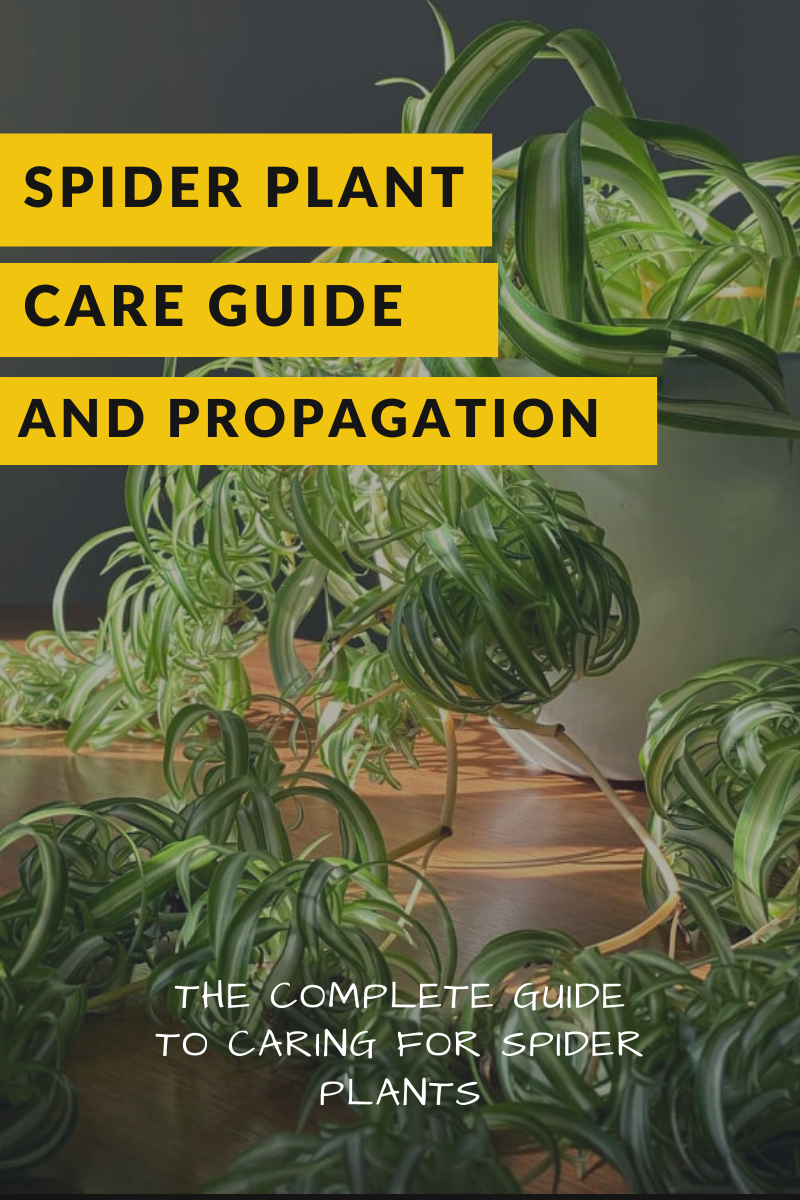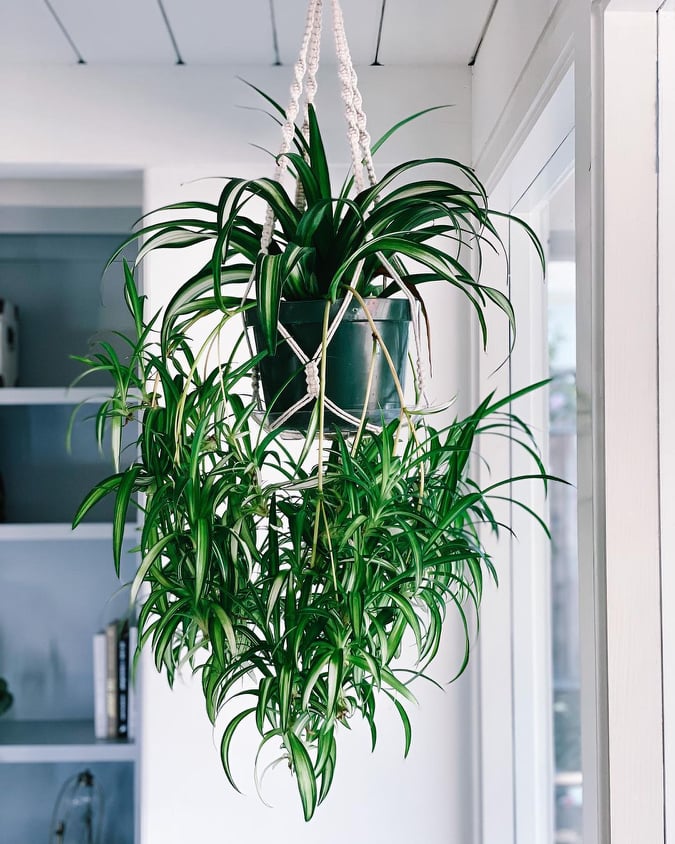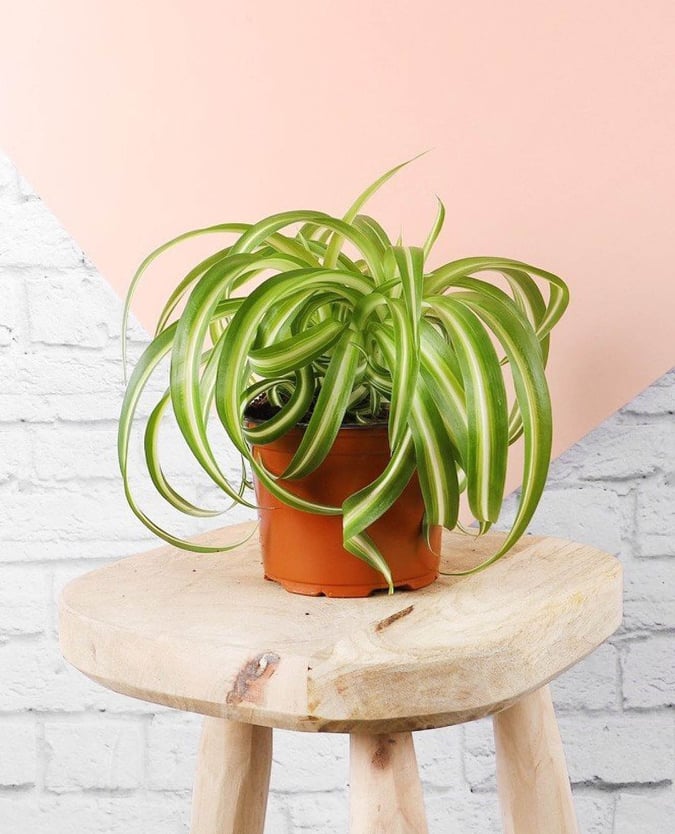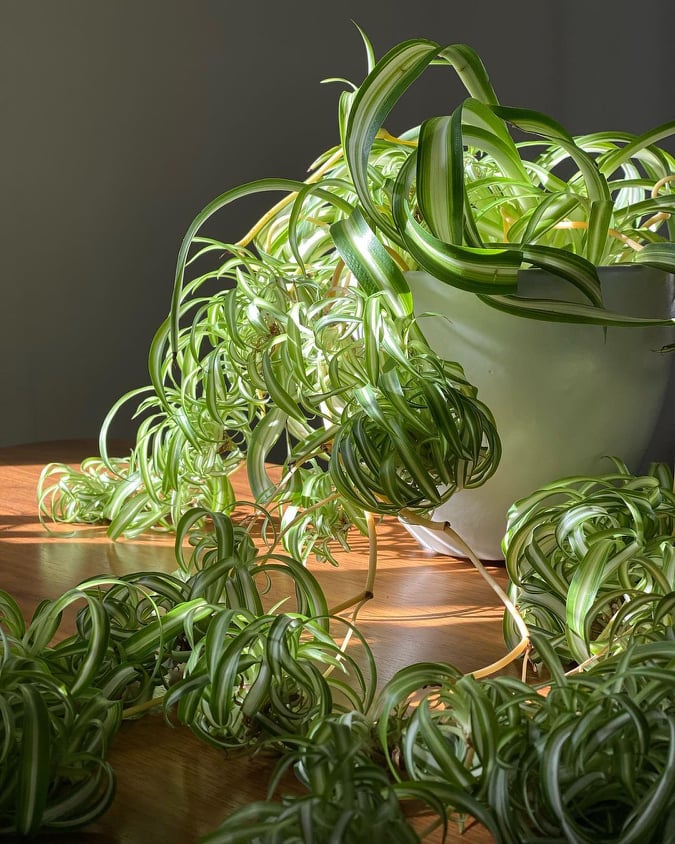Chlorophytum comosum popularly known as the spider plant is a very common houseplant. A native of South Africa and can survive in less than perfect condition. These plants are considered to be one of the most adaptable houseplants. Due to their adaptability, they can grow in any season with a moderate growth rate. Consisting of green and white striped leaves, long stems, and tiny flowers in the shape of a star, this graceful plant makes people awe whenever they see it. Being an ornamental indoor plant with its medicinal properties and capacity of purifying the air, this plant has been named so because of its striped leaves and spider plant babies, which droop down from the mother plant like spiders on a web.
If you love gardening, you would regret not having this stunning beauty in your collection. And if you do have this already, then there are a few things like spider plant care, spider plant benefits, and spider plant propagation method, etc which you must know. We have it all here, scroll down to find all the information.

Biological name- Chlorophytum comosum
Common Name- spider plant, airplane plant, spider ivy, ribbon plant, Bernard’s lily
Kingdom- Plantar
Family- Asparagaceae
Height- up to 2 feet tall
Native- Africa
Soil type- loamy, well-drained soil
Bloom period- regular
Toxicity- non-toxic
Spider Plant Benefits
Spider plant benefits are something we have heard from our childhood. Besides being just a decorative plant it provides various benefits. Below we have listed the well-known benefits that we get from spider plants.
1. Hard to kill
You may be a beginner in gardening or a serial indoor plant killer. Here is your solution. The spider plant is one of those plants which pretty much grow themselves and don’t need much of your care or attention. It forgives your occasional mistakes of overwatering or under watering and is quick to adapt to change. It can thrive well in various climatic conditions and grow well in low light or part sunlight.
2. Air purifier
An effective air purifier, it removes harmful chemicals like carbon monoxide, xylene, formaldehyde, and toluene from the air. According to the reports of NASA, the spider plant is counted among the 3 houseplants which are great at removing formaldehyde, a common household chemical, and produce more chlorophyll which leads to more oxygen production.
3. Pet safe
Before keeping any plant indoors, you must check that are they safe for your pets. According to the American Society for the Prevention of Cruelty of Animals (ASPCA), the spider plant is listed as non-toxic for pets, and hence safe for cats and dogs. But still, it is advised to keep your pets away from the plant to avoid upset stomachs.
4. Good for patients
Various researches show that having a super plant in the hospital room speeds up the recovery of patients from surgery. Lower systolic blood pressure, and lower ratings of pain, anxiety, and fatigue were recorded and the patients do not suffer from anxiety, depression and need less pain medication. It also leads to their speedy release from the hospital.
5. Increases humidity
Being a perennial with a high transpiration rate. It absorbs water through its roots and then circulates the moisture through stems and leaves. When the water reaches the leaves, it evaporates into the air and increases the humidity. The increased humidity decreases the risk of several airborne diseases, such as cold, cough, sore throat, and flu-like symptoms.
6. Looks appealing
Apart from the various benefits this plant also looks appealing and hence can be kept or hanged anywhere around the house.
Types of Spider Plant

Spider plants are of various types. Now they are found in every household around the globe. Some basic and most common kinds of spider plants are:
1. Chlorophytum comosum Bonnie – Curly Spider Plant

Identified by its bright and curled leaves with green margins, these plants are more compact. They are known to produce yellow flowers. Being a strong plant, they are easy to take care of. They must not be kept under direct sunlight.
2. Chlorophytum comosum Variegatum
Considered among one of the easiest houseplants to grow, this variety has a long green stem that hangs like flowers, leaf margins of cream/white with a dark green stripe in the middle. They are evergreen plants perfect for your study room shelf.
3. Chlorophytum comosum Vittatum – Variegated Spider Plant
A decorative gush having leaves with a green margin and the center with white stripes. It is a favorite indoor plant that can be grown outdoors in the shade once the weather warms. This plant has stems that are long and white in color.
Spider Plant Care
Although they are tough plants you should keep some things in mind when you grow spider plants. Follow the instructions given below to know how to take spider plant care. This article throws light on some aspects like watering, fertilization, soil, temperature, humidity, sunlight and toxicity, etc which are important for a spider plant.
1. Fertilizer
- Weak growth will be caused by under fertilization
- Brown leaves will be caused by over-fertilization
- A moderate amount of fertilizer will be best suited
- Damp soil is preferred before fertilization
2. Light
- Avoid direct sunlight to protect the leaves from getting scorched
- Won’t be robust in heavy shade
- Prefer bright indirect lighting
- A bright window which gets indirect sun would be best suitable
3. Soil
- Can grow in various types of soil
- Need sharp drainage
- Slightly acidic or slightly alkaline pH can be managed
- Prefer neutral soil pH
- Best grown in a loose, loamy soil
4. Water
- Soggy soil can lead to rotting of the roots
- Perfect lightly moist soil
- Best grown in rainwater or distilled water
- Avoid fluoride and chlorine in the water to prevent brown leaf tips
- Must be dry out between watering
5. Humidity
- Warm humid conditions are ideal
- Misting the soil regularly can help to maintain the adequate humidity
6. Temperature
- Avoid crafts and air conditioning while indoors
- The temperature must not be below 50 degrees Fahrenheit
- Preferably between 60 to 80 degree during the day and above 55 degrees during the night
Spider Plant Propagation
There are 3 widely known ways in which spider plants can propagate. All the ways are described in detail. Scroll down to find out.

1. Propagating Through Spider Plant Babies
When your spider plant matures you can see multiple runners with delicate white flowers on the ends. These small flowers will become the new little plants on their own and you don’t have to touch them. They self propagate in this way.
2. Propagating Through Water
Cut the stems of the spider plant from the main plant. Put them in a vessel containing water only till the roots. Keep changing the water regularly and you can see your mature plant grow from the stem.
3. Propagating Through Direct Soil
The simplest way to propagate the spider plant. Cut off the baby plant from the mother plant. Plant them directly into the soil in their own pots. It makes takes a little time to settle in. Keep the soil moist, but not too wet until you see new leafs appearing.
Some Interesting Facts:-
- If the vibrant green stripes of your spider plant are fading, it is thirsty.
- Spider plant babies are called spiderettes
- Spider plant is effective in reducing indoor carbon monoxide levels, decreasing fatigue, headaches, colds, sore throats, and flu-like symptoms caused by CO exposure.
- Rinse the plant to keep the infections at bay.
Recommended Read:
12 Best Plants for Bedroom For Better Sleep
50+ Creative Hanging Plants Ideas For Indoor



